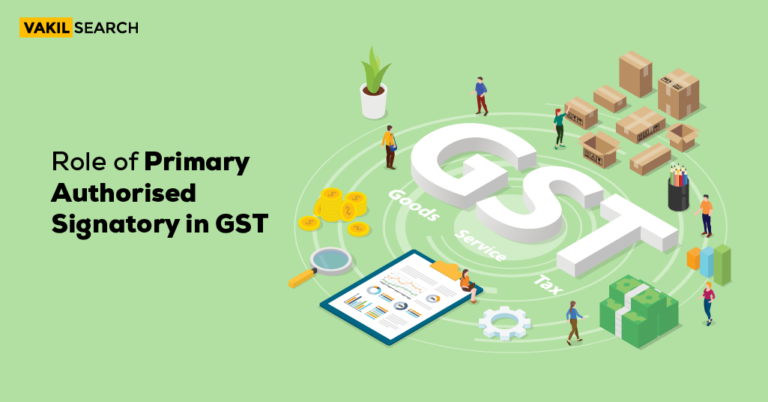What has been the true impact of the GST on SMEs? It's been a mixed blessing. Keep reading to learn more.
Indirect taxes on goods and services have been consolidated into a single tax with a single return filing system. Dealing with tax authorities is also easier with a unified tax such as GST on small and medium business enterprises. Because GST imposes a single tax on goods and services across India, it eliminates the complexities produced by the overlap between Central taxes (excise duty, customs duty, service tax, and so on) and State taxes (VAT, purchase tax, luxury tax, and so on). All in all, the GSTN portal has made it easier for small enterprises to submit and pay taxes.
Benefits of GST for Small and Medium Business Enterprises
The cascading impact of taxes was successfully abolished by GST, making the tax procedure clear for SMEs and lowering their tax burden. Furthermore, because the complete GST Registration Process is online, it saves time and effort.
For SMEs in the transportation industry, the conventional tax structure was a huge headache. Because of the interstate entrance points and checks, the cars had to spend a lot of time in long lines. Fuel and labor expenditures were lost as a result of this. The fact that the GST replaced the Central Sales Tax with the Integrated GST or IGST, as well as the check-post and border levies, has had a considerable influence on small businesses. This has inadvertently aided the industry in lowering delays and transportation costs, allowing for speedier and more frequent interstate travel.
Dilemmas of GST for Small and Medium Business Enterprises
Since not all SMEs have the technological know-how to cope with online-based GST mechanisms, the majority of them will have to rely on professionals to get registered. However, this predicament can be tackled at a hassle-free and affordable pace with the help of the experts at Vakilsearch.
To add to this even small businesses that engage in e-commerce operations should register for GST, regardless of their yearly turnover rate. Moreover such enterprises, unlike other types of businesses, will not be eligible for threshold exemptions or the Composition Scheme (which allows firms to file their tax returns every quarter instead of 3 times a year and pay taxes at a much lower rate). This is a rather regrettable setback small businesses face under the GST regime, especially in the digital era.
Positive impacts of GST on SMEs
- Streamlined Tax Structure: GST replaced multiple indirect taxes with a single tax, eliminating the complexities of navigating different tax regimes. This simplification has reduced the compliance burden for SMEs, allowing them to focus more on business growth.
- Reduced Tax Cascading: Under the previous tax system, SMEs faced the issue of tax cascading, where taxes were levied on taxes. GST has eliminated this cascading effect by allowing businesses to claim input tax credit for taxes paid on inputs, thus reducing the overall tax liability.
- Increased Threshold Exemption: GST introduced a higher threshold for tax registration, benefiting small businesses. Previously, businesses with turnover above a certain limit were liable to pay taxes, but GST raised the threshold, reducing the tax burden on many SMEs and providing them with more flexibility to expand their operations.
- Improved Supply Chain Efficiency: GST has facilitated the seamless movement of goods across state borders by eliminating interstate checkposts and reducing paperwork. This has resulted in faster and more efficient logistics, enabling SMEs to expand their customer base and explore new markets without the hassle of interstate barriers.
- Enhanced Competitiveness: With the implementation of GST, SMEs now have a level playing field in terms of tax compliance and pricing. This has boosted their competitiveness by reducing price disparities caused by varying tax rates across different states, enabling them to compete more effectively with larger enterprises.
- Encouragement of Formalization: GST has incentivized SMEs to shift from the informal sector to the formal economy. By registering under GST, businesses gain access to various benefits, such as input tax credit and participation in government tenders, fostering transparency and accountability within the SME sector.
- Technology Adoption: GST implementation necessitated the use of technology for tax compliance, including the filing of returns and maintenance of records. This has encouraged SMEs to embrace digitalization and adopt accounting and invoicing software, leading to improved efficiency in their operations.
- Ease of Doing Business: GST has simplified various business processes, such as registration, return filing, and refund procedures. The online platform for GST compliance has reduced bureaucratic red tape, making it easier for SMEs to comply with tax requirements and focus on their core business activities.
- Expansion Opportunities: With the abolition of interstate trade barriers and the introduction of a unified market, SMEs now have access to a larger customer base. This has opened up new avenues for growth and expansion, allowing SMEs to explore untapped markets and diversify their operations.
- Enhanced Credit Availability: Under the GST regime, businesses can avail input tax credit on their purchases, including capital goods. This has improved credit availability for SMEs, making it easier for them to invest in machinery, technology, and infrastructure, thereby fostering business growth.
- Increased Investor Confidence: The implementation of GST has led to a more transparent and standardized tax system, increasing investor confidence in the Indian market. This has attracted both domestic and foreign investment, providing SMEs with opportunities for collaborations, partnerships, and access to capital for expansion.
Negative Impact of GST on SMEs
- Compliance Burden: GST implementation has increased the compliance burden on SMEs due to the requirement of regular filings, maintaining detailed records, and adhering to complex regulations. This can be especially challenging for small businesses with limited resources and personnel.
- Increased Costs: SMEs often face additional expenses related to GST compliance, such as investing in accounting software, hiring tax consultants, and training employees to understand the new tax system. These increased costs can strain the financial resources of small businesses.
- Cash Flow Issues: SMEs, especially those involved in manufacturing or trading, may face cash flow challenges due to the introduction of the reverse charge mechanism under GST. This requires businesses to pay taxes upfront, even before receiving payment from their customers, impacting their working capital.
- Limited IT Infrastructure: Many SMEs lack the necessary IT infrastructure and technological capabilities to smoothly transition to the online GST portal. The need for online filings and digital transactions can be a hurdle for businesses that have limited access to technology or lack the expertise to navigate the digital platforms.
- Increased Compliance Complexity: The complexity of the GST structure, including multiple tax slabs, exemptions, and inter-state tax implications, can be overwhelming for SMEs. Complying with different rates and rules across various states adds to the administrative burden and can lead to confusion and errors.
- Impact on Competitiveness: Some SMEs may struggle to compete with larger enterprises that have more resources and better infrastructure to handle GST compliance. Compliance costs and complexities can put smaller businesses at a disadvantage, affecting their competitiveness in the market.
- Supply Chain Disruptions: The implementation of GST led to changes in supply chain dynamics, including the reorganization of distribution networks and the need to align with new compliance requirements. SMEs with intricate supply chains may face disruptions and delays during the transition, impacting their operations and customer satisfaction.
- Transition Challenges: The initial transition from the previous tax system to GST posed challenges for SMEs, including understanding new rules and procedures, updating their accounting systems, and adapting to revised invoicing requirements. This transition period may have caused temporary disruptions and uncertainties for small businesses.
- Impact on Unorganized Sector: SMEs in the unorganized sector, such as small retailers and informal businesses, faced difficulties in complying with GST regulations due to limited awareness, lack of formal documentation, and cash-based transactions. This may have resulted in a negative impact on their operations and profitability.
- Increased Compliance Penalties: Non-compliance with GST regulations can lead to penalties and fines. For SMEs with limited resources and a lack of tax expertise, the fear of facing penalties can add stress and further strain their financial stability.
The Bottom Line on GST for Small and Medium Business Enterprises
Without a doubt, GST is intended to expand the taxable base, mostly through SMEs, and will impose a compliance burden and related expenses on them. However, in the long run, GST will make these SMEs more competitive by creating a level playing field between them and large corporations.
Did you know that businesses will be required to register for GST: https://www.gst.gov.in/ in each state in which it is engaged in business? If your company sells or provides services in three states, you’ll need to register for GST in each of those states to legally conduct business. For help get in touch with our experts and become GST-compliant today!










